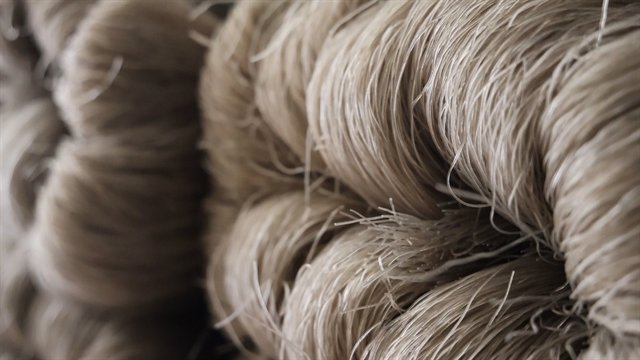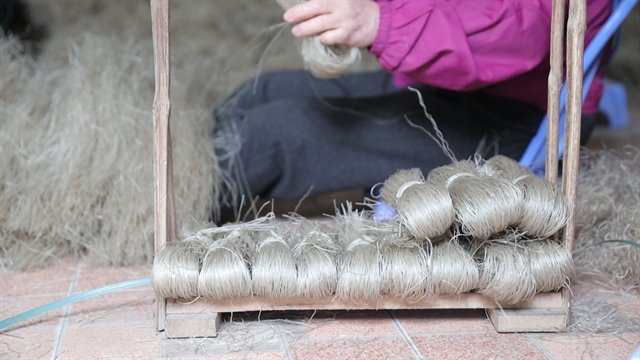January 9, 2023
HANOI – On the peaceful banks of the Nhuệ River lies the picturesque Cự Đà ancient village, which is famous for brick houses with traditional architecture and for making glass noodles.
Approaching the Tết (Lunar New Year festival), which falls on January 22 this year, the whole village in Hà Nội suburb’s Thanh Oai District have been busy producing glass noodles, found in dishes from soups, stir-fries to hot pots across Việt Nam during the spring festival.
Cự Đà Village’s glass noodles (also known as cellophane noodles) are made entirely with flour from canna roots and water. It is delicious, retaining its natural crunchiness and flavour when cooked.
The villagers make the noodles all year round, but from the 10th month of the lunar calendar onwards, they are at their busiest to meet higher demand for the food.
“Currently, my workshop produces around 2 tonnes of noodles per day to sell in many provinces and cities throughout the country. On average, 1kg of glass noodles will cost VNĐ50,000 (more than US$2),” said Đinh Văn Đạt, owner of the Phát Đạt noodle workshop.

Cự Đà vermicelli is made entirely from arrowroot. — VNS Photo Ly Ly Cao
To prepare for Tết, Đạt has to hire more seasonal workers and mobilise all resources available.
Đinh Thị Loan, another noodle maker in Cự Đà, said that her family business had been passed down from two generations.
“We have been making noodles for 50 years if counted from our grandparents, parents then us,” Loan said.

Đinh Thị Loan, a noodle maker in Cự Đà Village said that her family business had been passed down from her grandparents. — VNS Photo Ly Ly Cao
Loan’s products are often supplied to soup stalls in Hà Nội.
“Demand is much higher for the Lunar New Year. We have to make double the usual daily output,” she said, adding her workers earn about VNĐ7 million ($300) a month.
Every day, the village produces about 15 tonnes of glass noodles. The number of customers is increasing, and many have to order a long time ahead. Production can increase to 20-25 tonnes daily in the days approaching the Lunar New Year.
Making glass noodles is not too hard, but the production process requires many stages: cleaning the edible canna roots, grinding them with water, making the mixture into batter, thinly spreading the batter on a frame, cooking it into a thin sheet, cutting it into strings and leaving it to dry.

Drying glass noodles is also an important stage during the process of making the food. — VNS Photo Ollie Arci
The process of making glass noodles is supported by machines but still uses human power, especially drying. Drying the noodles brings many women an income of VNĐ400,000-500,000 per day during the Lunar New Year, and they work hard in the sun and rush to retrieve them when it rains.
Silky white, transparent noodles are dried everywhere in the village, from the house roofs and the walls to any space on which the product can be dried.
Đinh Thị Ngân, who has been making the noodles for decades in Cự Đà, said that to have delicious food at each stage, the maker must be meticulous.

Cự Đà glass noodles are packed and distributed to all regions of the country. — VNS Photo Ly Ly Cao
Cự Đà Village has experienced many ups and downs, and urbanisation has narrowed the area for drying the product. However, the industry is still developing. For the people here, it is not only a long-standing tradition but a stable livelihood.
“Like many producers in the village, I want to sell our noodles in the supermarkets to heighten their value,” Loan said.
According to Đinh Công Minh of the Cự Đà Craft Village Association, the village started making the noodles about 70 years ago. At first villagers made them by hand. Now their production has been supported by machines.
“Our village is proud to produce clean noodles of excellent standards from edible canna roots, so it is famous in the country and Southeast Asia,” Minh said. “It is this reputation and quality that helps our village’s economic growth.” VNS

Now technical advancement allows to produce a large amount of glass noodles at one time. — VNS Photo Ollie Arci


